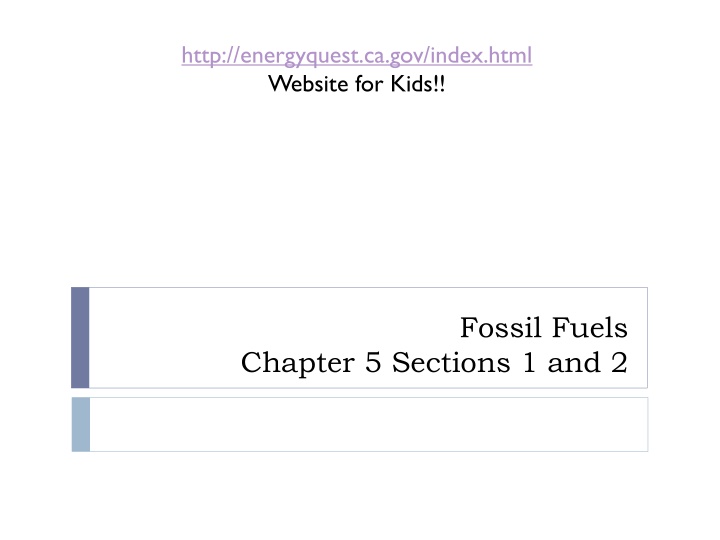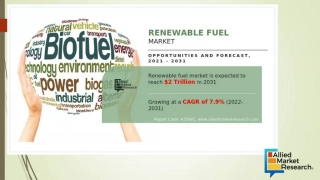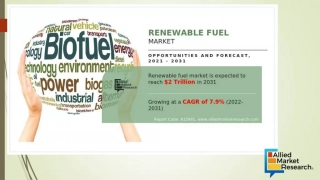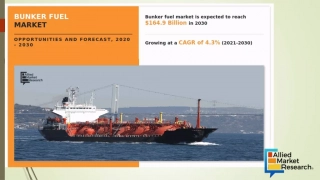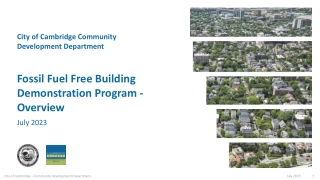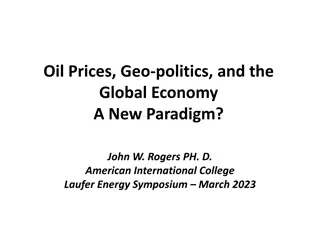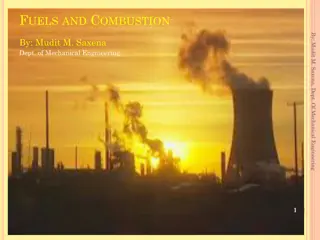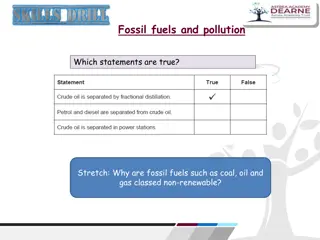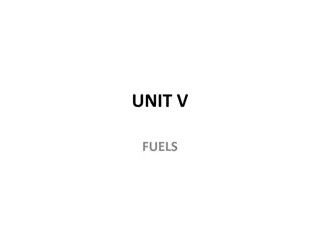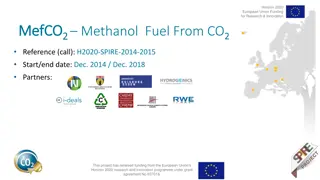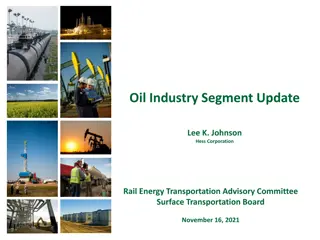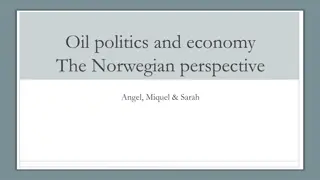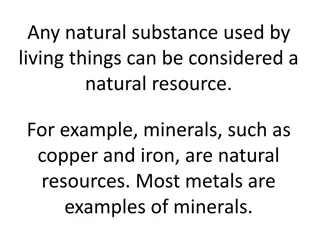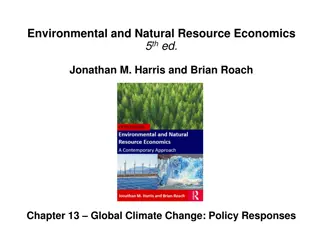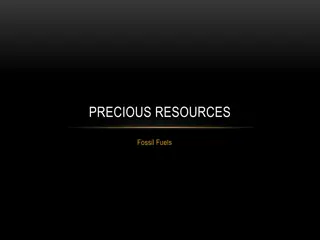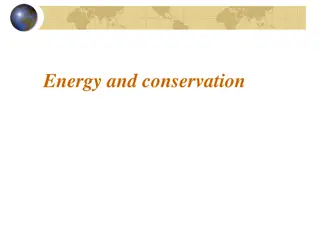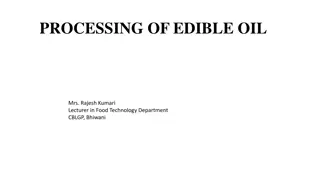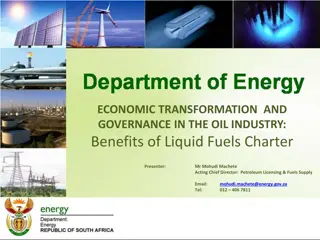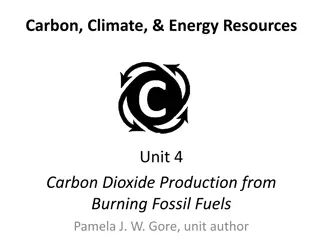Fossil Fuels and Oil Formation
Fossil fuels are nonrenewable energy sources formed from long-dead plants and animals. Oil, natural gas, and coal are the three main types of fossil fuels. Nonrenewable resources like oil took millions of years to form and cannot be replaced. Learn how oil is formed, extracted from the Earth, and used in various industries.
Download Presentation

Please find below an Image/Link to download the presentation.
The content on the website is provided AS IS for your information and personal use only. It may not be sold, licensed, or shared on other websites without obtaining consent from the author.If you encounter any issues during the download, it is possible that the publisher has removed the file from their server.
You are allowed to download the files provided on this website for personal or commercial use, subject to the condition that they are used lawfully. All files are the property of their respective owners.
The content on the website is provided AS IS for your information and personal use only. It may not be sold, licensed, or shared on other websites without obtaining consent from the author.
E N D
Presentation Transcript
http://energyquest.ca.gov/index.html Website for Kids!! Fossil Fuels Chapter 5 Sections 1 and 2
What are Fossil Fuels? A. Fossil Fuels are nonrenewable energy sources. B. They form from the remains of long dead plants and animals. C. 3 Types of fossil fuels: Oil (petroleum) Natural Gas Coal 1. 2. 3.
What does nonrenewable mean? Nonrenewable resources, like coal, oil and natural gas, are resources that can t be replaced. These resources took millions of years to form. Once they are gone or used up, there will be no more. They form at a rate that is much slower than the rate at which they are consumed. 1. 2. 3. 4.
How is oil formed? Oil was formed from the remains of microscopic animals and plants that lived millions of years ago in a marine (water) environment before the dinosaurs. Over the years, the remains were covered by layers of mud. Heat and pressure from these layers helped the remains turn into what we today call crude oil. The word "petroleum" means "rock oil" or "oil from the earth. http://www.adventuresinenergy.org/What-are-Oil-and- Natural-Gas/How-Are-Oil-Natural-Gas-Formed.html 1. 2. 3. 4. 5.
How do we get oil from the Earth? Crude oil is a smelly, yellow-to-black liquid and is usually found in underground areas called reservoirs. Scientists and engineers explore a chosen area by studying rock samples from the earth. Measurements are taken, and, if the site seems promising, drilling begins. Above the hole, a structure called a 'derrick' is built to house the tools and pipes going into the well. When finished, the drilled well will bring a steady flow of oil to the surface. 1. 2. 3. 4. 5.
We drill for oil on land and underneath the ocean. 1. Offshore drilling brings oil from underneath the ocean floor to the surface.
How do we use oil? Oil supplies about 40% of the nation's energy needs. The most common use of crude oil is: Production of gasoline (47%); Heating oil and diesel fuel (23%); Petrochemical feedstock (products derived from petroleum) for the manufacturing of chemicals, synthetic rubber, and plastics (18%); Jet fuel (10%); Propane (4%); and Asphalt (3%). 1. 2. 3. 4. 5. 6. 7.
How is oil processed? Crude oil is sent to a refinery. The oil is heated and different products are formed when oil is heated. 1. 2.
How is coal formed? The energy in coal comes from energy that was stored in giant plants that lived hundreds of millions of years ago in swamp forests, even before the dinosaurs! When these giant plants and ferns died, they formed layers at the bottom of the swamps. Water and dirt began to pile up on top of the dead plant remains. Over thousands of years pressure and heat would build up on top of the plant remains, undergoing chemical and physical changes and pushing out the oxygen, turning these remains into what we call coal. 1. 2. 3. 4.
How do we use coal? Coal is the most abundant fossil fuel in the US. Coal is the primary source of electricity in the US. Coal is burned to heat water and convert it to steam. That steam is pressurized and can be used to turn a turbine which produces electricity. Coal is also used in iron and steel production, cement manufacturing, in the production of coal tar, home heating, and any number of industrial applications that require heat. 1. 2. 3. 4. 5.
What s natural gas? Natural gas is a fossil fuel. Like oil and coal, this means that it is, essentially, the remains of plants and animals and microorganisms that lived millions and millions of years ago 1. 2.
Natural Gas Natural gas is lighter than air. Natural gas is mostly made up of a gas called methane. Natural gas is usually found near petroleum underground. It is pumped from below ground and travels in pipelines to storage areas 1. 2. 3.
How do we use natural gas? Electric power generation (26.4%), Industrial use (30.3%), Residential use (21.6%), Commercial use (13.9%), Lease and plant fuel consumption (5%), Pipeline and distribution (2.6%), and Vehicle use (0.1%).
What is combustion? Burning of coal, oil (including gasoline), or natural gas. This burning, usually to generate energy, releases carbon dioxide, as well as combustion by products that can include unburned hydrocarbons, methane, and carbon monoxide. Carbon monoxide, methane, and many of the unburned hydrocarbons slowly oxidize into carbon dioxide in the atmosphere. Common sources of fossil fuel combustion include cars and electric utilities.
